Showing 1–12 of 61 results
-
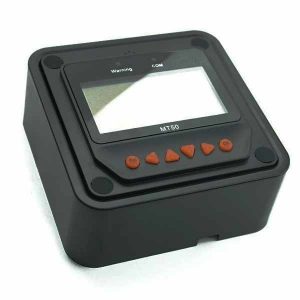
EPSolar Remote Control
$56.00 -
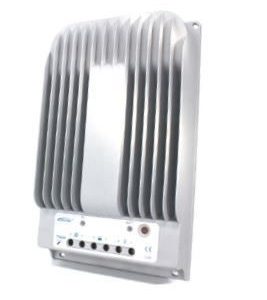
EPSolar MPPT, 12/24 Solar Regulator, 40A (cETL, Negative Ground)
$329.00 -
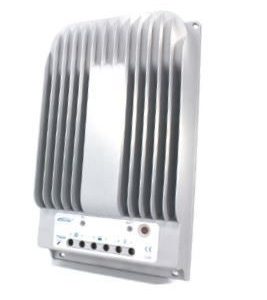
EPSolar MPPT, 12/24 Solar Regulator, 30A (cETL, Negative Ground)
$286.00 -
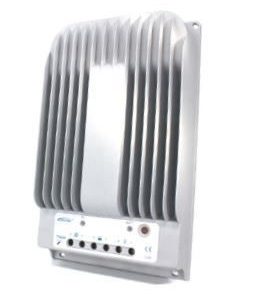
EPSolar MPPT, 12/24 Solar Regulator, 20A (cETL, Negative Ground)
$204.00 -
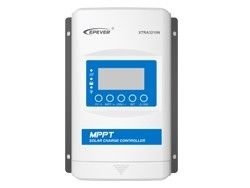
EPSolar MPPT, 12/24 Solar Regulator, 40A (CE only, Neg Gnd, Deluxe Digital Meter)
$241.00 -
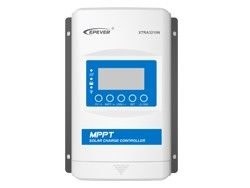
EPSolar MPPT, 12/24 Solar Regulator, 30A (CE only, Neg Gnd, Deluxe Digital Meter)
$173.00 -
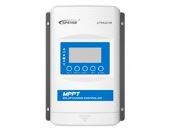
EPSolar MPPT, 12/24 Solar Regulator, 20A (CE only, Neg Gnd, Digital Meter)
$170.00 -
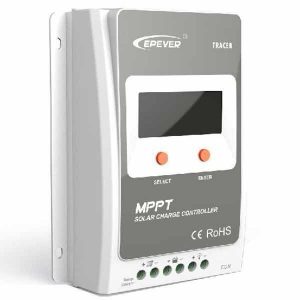
EPSolar MPPT, 12/24 Solar Regulator, 20A (CE only, for ungrounded systems)
$174.00 -
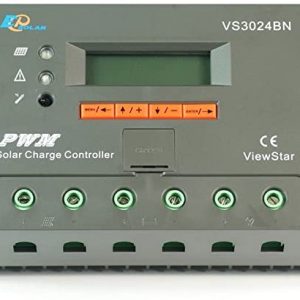
EP Solar PWM 30Amp, 12 Volt Solar Regulator
$95.00 -
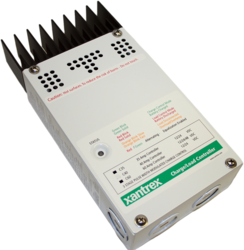
40 Amp, 12/24/48 Volt Regulator or LVD Or Load Div.
$301.00 -
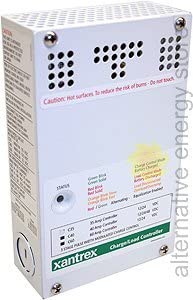
35 Amp, 12/24 Volt Regulator or LVD
$221.00 -
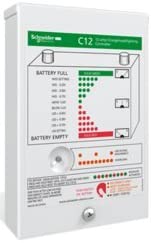
12 Amp, 12 Volt Regulator W/ LVD
$193.00
Solar Charge Controllers
Overcharging a solar battery causes damage and reduces its lifespan. Protect your solar system by purchasing a solar charge controller, which prevents overcharging by regulating the flow of energy that feeds into your battery.
We carry brands such as Xantrex, EPSolar, Morningstar, and Outback.
What is a Solar Charge Controller?
Without a charge controller, you can’t regulate how much power feeds into your solar battery. These devices are installed between your battery (or battery bank) and solar panels. A solar charge controller has 2 main jobs:
- It protects the batteries from being overcharged by the PV panels.
- It prevents current from reversing at night and discharging the battery.
As the battery charges, it goes through several stages:
- Bulk. At this point, the “bulk” of the charging is done; all amperage from the solar panels is directed to the battery.
- Absorption. After the bulk charging phase, the battery is closer to full—roughly 80% full. Since the battery is nearly charged, the current that flows into it is reduced.
- Float. During this stage, the battery is nearly full. Also known as the “maintenance” stage, the battery is between 95-100% full. The controller aims to sustain this charge to keep the battery full without overcharging it.
Most solar charge controllers (or regulators) fall into two categories: MPPT (maximum power point tracking) and PWM (pulse-width modulation). But which one is right for your system? To answer that, you’ll need to understand the main differences between these controllers:
PWM Charge Controllers
This device acts as an “on/off” switch between the PV panels and the battery. To regulate the charge of the battery, a PWM controller sends pulses of energy. It directs a steady current of power into the battery until it is fully charged.
Based on the battery’s charge state, the PWM controller changes how fast and how wide the pulses are. When the solar battery is full, the PWM controller tapers off how much charge flows to the battery.
Even though PWM controllers tend to be less expensive than MPPT ones, that doesn’t mean they perform worse. A PWM controller may be better-suited for your system depending on its size and location. That being said, these controllers do have their limitations.
PWM controllers have a distinct disadvantage: because of the pulsing mechanism, your battery receives a limited amount of voltage. Your PV panels may be able to produce a higher output than what the battery can receive. In this case, a PWM controller reduces the efficiency of your system.
When do I need a PWM controller?
- You’re on a budget. If you’re looking for a low-cost device, a PWM controller is the way to go. These devices are more affordable than MPPT ones.
- You have a smaller system. With a smaller system, it’s not as critical to have maximum energy efficiency. The cost of an MPPT controller may not be worth it. Instead, you may need to conduct a cost-benefit analysis to determine if purchasing another panel will benefit you more than an MPPT controller.
- You live in a sunny climate. If your system is set up in a sunny area with a warm climate, a PWM solar controller will be perfect. You won’t necessarily require the complex technology of an MPPT controller to harvest sufficient solar power.
For entry-level solar systems, a PWM controller will do the job just fine. But if you want to maximize the power output of your solar panels, you may need an MPPT controller for your system.
MPPT Charge Controllers
An MPPT controller continuously tracks the voltage output of solar panels. This allows it to maximize the amperage that flows to the battery. It optimizes the output of your system so that you get the most out of your PV panels.
The term “tracking” refers to the controller’s ability to compare the battery voltage to the output of your solar panels. It constantly measures the voltage of the battery and modifies the output from the panels accordingly.
A PWM solar controller will passively charge a battery, but an MPPT controller will actively adjust the current based on the weather conditions and battery charge. These modifications maximize power output, making MPPT controllers more energy-efficient.
First, the controller identifies the output of the PV panel. Then, it compares that output to the battery voltage. It then adjusts the voltage that flows into the battery so that it reaches an optimized level without overcharging it. Essentially, it maximizes the energy harvesting of your solar panels.
Due to this digital tracking, an MPPT charge controller increases the efficiency of power conversion. An MPPT controller is up to 30% more efficient than a PWM one.
When do I need an MPPT solar controller?
- You live in a cloudy, cold climate. MPPT controllers are optimal on cloudy days. In locations with less consistent sunshine, or more snow, you might want to opt for an MPPT controller. They convert more power than PWM controllers in those conditions. These controllers also function better than PWM ones in cold temperatures.
- You have a large system. With a large high-voltage system, the efficiency of an MPPT controller will pay off substantially. You’ll benefit from the increased control and efficiency of these controllers.
- Your solar panels are far away from your battery bank. Even though MPPT controllers are more expensive, you might need to pay more for wiring with a PWM controller. This is because you can wire panels in series with an MPPT setup (but you can’t with a PWM one). The wires for these panels can be smaller and the amperage can be lower. These savings may justify the cost of an MPPT solar controller.
- The solar panels have a higher voltage than the battery. You need the voltage of your PV panels and battery to match if you’re using a PWM controller. But this isn’t the case for MPPT controllers, which are more accommodating for larger systems.
Choosing between an MPPT and PWM controller is rarely a straightforward choice. The right controller for a setup depends on the location of the panels, your budget, and the size of the system. Have more questions? Contact
SRB Energy for more info.
